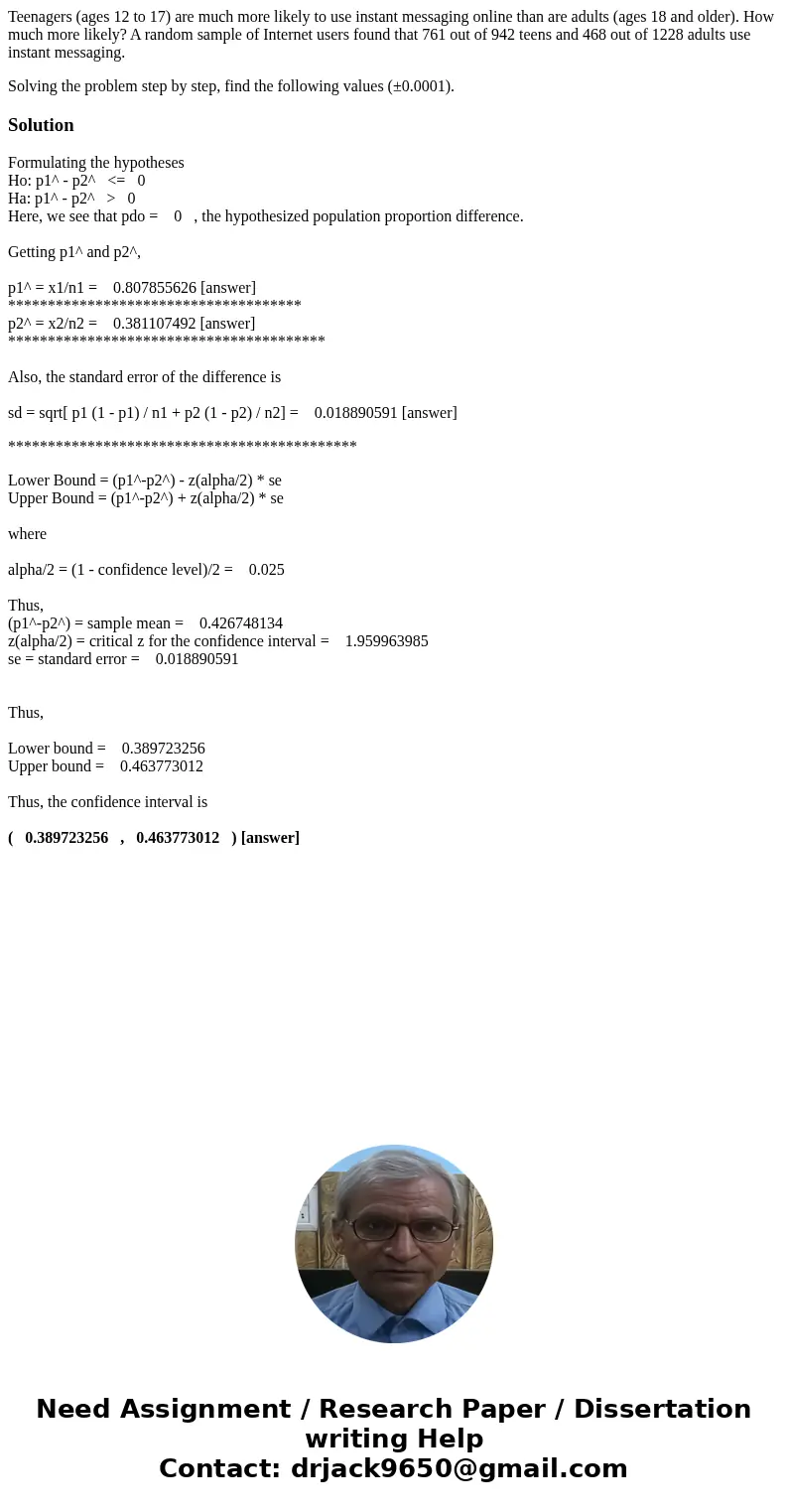Teenagers ages 12 to 17 are much more likely to use instant
Teenagers (ages 12 to 17) are much more likely to use instant messaging online than are adults (ages 18 and older). How much more likely? A random sample of Internet users found that 761 out of 942 teens and 468 out of 1228 adults use instant messaging.
Solving the problem step by step, find the following values (±0.0001).
Solution
Formulating the hypotheses
Ho: p1^ - p2^ <= 0
Ha: p1^ - p2^ > 0
Here, we see that pdo = 0 , the hypothesized population proportion difference.
Getting p1^ and p2^,
p1^ = x1/n1 = 0.807855626 [answer]
*************************************
p2^ = x2/n2 = 0.381107492 [answer]
****************************************
Also, the standard error of the difference is
sd = sqrt[ p1 (1 - p1) / n1 + p2 (1 - p2) / n2] = 0.018890591 [answer]
********************************************
Lower Bound = (p1^-p2^) - z(alpha/2) * se
Upper Bound = (p1^-p2^) + z(alpha/2) * se
where
alpha/2 = (1 - confidence level)/2 = 0.025
Thus,
(p1^-p2^) = sample mean = 0.426748134
z(alpha/2) = critical z for the confidence interval = 1.959963985
se = standard error = 0.018890591
Thus,
Lower bound = 0.389723256
Upper bound = 0.463773012
Thus, the confidence interval is
( 0.389723256 , 0.463773012 ) [answer]

 Homework Sourse
Homework Sourse